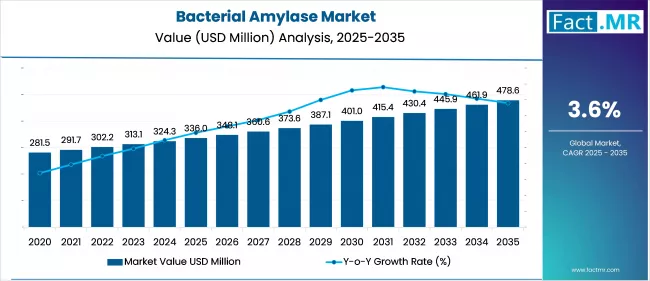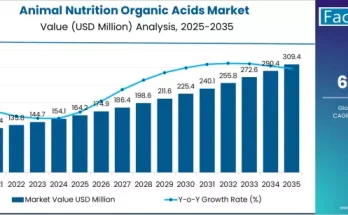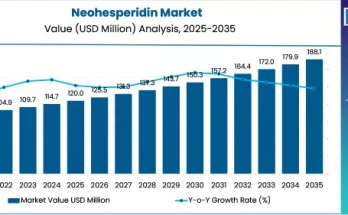Bacterial amylase is becoming a vital enzyme across multiple industrial sectors due to its efficiency in catalyzing starch breakdown. Its applications span food and beverages, animal feed, textiles, paper industries, and more. As industries focus on improving productivity and product quality, the bacterial amylase market is poised for steady growth, supported by advances in enzyme engineering, wider pH and temperature stability, and increased demand for bio-based processing.
Market Overview
Bacterial amylase, produced primarily from strains like Bacillus spp., Lactobacillus spp., and Pseudomonas spp., is widely used for its ability to hydrolyze starch and improve process yields. Alpha and beta amylases are the two primary types, each offering unique catalytic properties suitable for different industrial applications.
The enzyme plays a critical role in bakery, brewing, starch processing, confectionery, and dairy industries. Beyond improving efficiency, bacterial amylase contributes to better texture, taste, digestibility, and overall quality of food and feed products. Industrial demand is further enhanced by the rise of clean-label formulations, functional foods, and bioethanol production.
Regional Insights
- North America: High adoption in processed food and animal feed industries, driven by consumer demand for quality and efficiency.
- Europe: Growth is supported by a robust food processing sector and demand for high-quality animal feed.
- Asia-Pacific: Emerging as a key market due to population growth, urbanization, and increasing industrial activity in food, beverage, and feed sectors.
- Latin America & Middle East/Africa: Gradual growth through expanding bakery, feed, and beverage industries.
Key Trends & Forecast
- Industrial Enzyme Engineering: Innovations extend activity across wider pH and temperature ranges, enabling reliable performance in harsh industrial conditions.
- Functional Food Growth: Increased use in functional food and beverages supports market expansion.
- Animal Feed Demand: Rising global demand for high-quality feed products boosts bacterial amylase applications.
- Clean-Label Products: Preference for naturally derived enzymes enhances adoption in food and beverages.
- E-Commerce and Global Distribution: Expanding online sales channels enable wider access to bacterial amylase for industrial buyers.
Applications & End-Use Outlook
Bacterial amylase is critical in:
- Food & Beverages: Enhances baking processes, improves texture, and aids in brewing, syrups, and confectionery.
- Animal Feed: Improves digestibility, nutritional value, and performance of livestock feed.
- Textiles & Paper Industries: Used for starch hydrolysis and processing of fibers.
- Other Industrial Applications: Enzymes support bioethanol production and other biochemical processes.
Market Segmentation
By Type
- Alpha Amylase: Primarily used in starch liquefaction and bakery industries.
- Beta Amylase: Commonly applied in brewing and confectionery, aiding sugar release and flavor enhancement.
By Application
- Food & Beverages: Bakery, confectionery, dairy, syrups, fruit drinks, and alcoholic beverages.
- Animal Feed: Starter feed, starchy feed, and other nutritional supplements.
- Textile Industries: Starch removal and fiber processing.
- Paper Industries: Pulp processing and starch modification.
- Other Applications: Bioethanol production and industrial catalysis.
By Region
- North America: Driven by processed food demand and premium animal feed products.
- Europe: Growth supported by strict quality standards and functional food consumption.
- Asia-Pacific: Rapid expansion due to rising population, food production, and feed processing industries.
- Latin America & Middle East/Africa: Emerging demand in bakery, feed, and beverage sectors.
Drivers of Growth
- Industrial Efficiency: Bacterial amylase improves processing yields and reduces production time.
- Animal Feed Industry Expansion: Enhances digestibility, health, and performance in livestock.
- Rising Functional Food Demand: Enzymes support better texture, taste, and nutritional value in food products.
- Enzyme Engineering Advancements: Greater stability across temperature and pH conditions broadens applications.
- Global Food & Beverage Production: Growth in processed food and beverages fuels enzyme demand.
Challenges & Restraints
- Competition from Plant-Based or Fungal Enzymes: Alternative sources may limit bacterial amylase adoption.
- Price Sensitivity: Premium enzyme formulations may face cost challenges in price-conscious markets.
- Regulatory Hurdles: Compliance with food, feed, and industrial safety standards is critical.
- Market Fragmentation: Numerous players create competitive pressure on pricing and innovation.
Competitive Landscape
Prominent players focus on innovation, quality, and distribution networks. Key companies include:
- Worthington Biochemical Corporation
- BIO-CAT Company
- American Biosystems, Inc.
- LALLEMAND Inc.
- Gusmer Enterprises, Inc.
- Tokyo Chemical Industry Co., Ltd.
Strategies include product development for specific industrial applications, geographic expansion, partnerships with food and feed producers, and adoption of sustainable sourcing practices.
Future Outlook
The bacterial amylase market is expected to grow steadily over the next decade due to:
- Food & Beverage Innovation: Continued growth in bakery, brewing, and confectionery applications.
- Functional Feed Adoption: Rising demand for nutrient-dense animal feed products.
- Technological Advances: Enzyme engineering will enable broader applications and more efficient catalysis.
- Sustainability Focus: Preference for bio-based enzymes over chemical alternatives supports long-term growth.
- Global Market Expansion: Emerging markets in Asia-Pacific, South America, and Africa offer new opportunities.
Conclusion
The bacterial amylase market is a crucial driver of efficiency, quality, and innovation across multiple industries. From enhancing food and beverage processing to improving animal feed performance and supporting industrial applications in textiles and paper, bacterial amylase is integral to modern production processes.
With continued technological advancement, rising demand for functional foods and clean-label products, and expanding industrial applications, the bacterial amylase market is well-positioned for sustainable growth over the next decade. Companies investing in research, quality assurance, and global distribution are likely to secure competitive advantages in this dynamic market.
Browse Full Report – https://www.factmr.com/report/4245/bacterial-amylase-market



